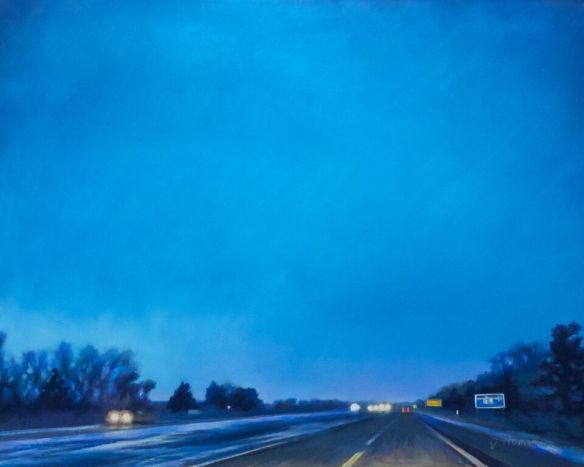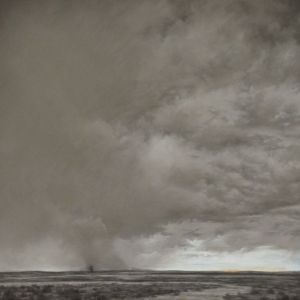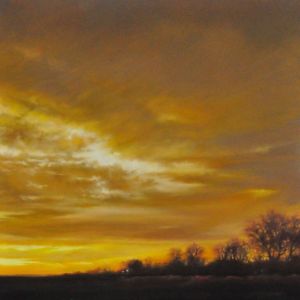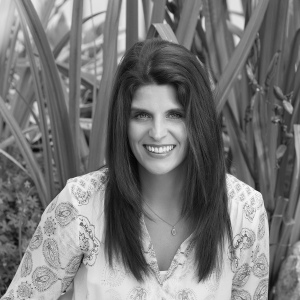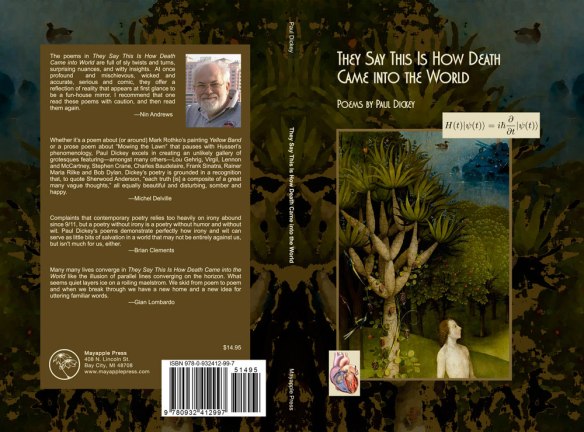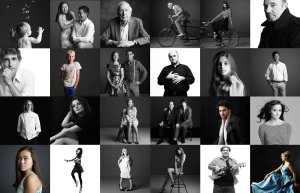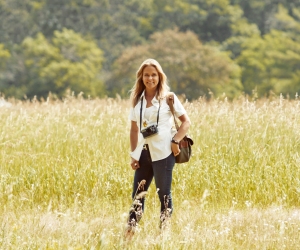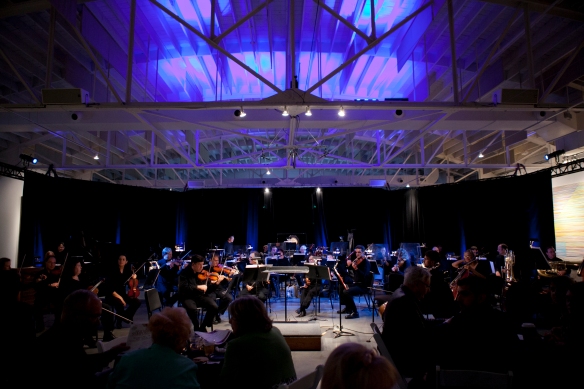The Nebraska Cultural Endowment exists to serve you by providing reliability and sustainability for the arts and humanities programs supported by Humanities Nebraska and the Nebraska Arts Council. Hundreds of organizations around the state benefit from their grants and programs. Continue reading
Category Archives: Art
Being An Artist Is My Livelihood
Jennifer’s Story
I am often asked at what point during my life did I decide I was an artist. In spite of the poor grammar, I usually respond with a quote from Will Rogers…”An artist is the only thing a man can say he is and nobody can prove he ain’t.”
I do believe I was born to create. Growing up in the middle of Nebraska in the 1970’s, there was not a lot of exposure to the arts. As a child, I was compelled to draw, paint and construct all sorts of things. If I wasn’t outside exploring the landscape, I was indoors creating. Although my mom kept an immaculate house, she never denied me the opportunity to make an explosive mess of art supplies and found objects. My parents even let me wallpaper an entire bedroom with sheets of abstract designs I created with Mr. Sketch markers.
In 1985, the Nebraska Art Collection took up permanent residence in my hometown of Kearney. The Museum of Nebraska Art gave me the opportunity to enter a “real” art museum for the first time. I found the works that resided there utterly inspiring. Over the next few years, the collection fueled my desire to create pieces of my own.
During my high school years, I took as many art classes as could fit into my schedule. Those classes were my saving grace and the one bright spot in my school day. I was not an athlete, nor was I musically inclined. I wasn’t particularly good at school, and math made my stomach turn. Art was the one thing that felt right, and the only thing that provided me with a much need dose of self-esteem.
I went on to study painting at Colorado State University. I graduated with honors in 1994 and spent the next several years teaching art along the front range of Colorado. It was during my commute to work that I began to notice an increase of human presence on the landscape. Billboards, cell towers and strip malls began popping up along the greenbelts which separated one city from the next. I felt compelled to preserve these quickly vanishing spaces through paintings.
”An artist is the only thing a man can say he is and nobody can prove he ain’t.” – Will Rogers
In 1998, I married my high school sweetheart and moved back home to Nebraska. I was astonished to discover the Nebraska landscapes I explored as a child had also been altered. And so, my preservation through painting continued. This interaction between man and landscape is still reflected in my work today.
In each of my pastels, I add an element of human presence. It might be a road, a passing car, the distant light of a farmhouse or simply a tree planted by human hands. These are reminders of the impact we, as humans, have on our land. It is my hope that by pointing out the beauty in the ordinary, people will better appreciate what they see each day.
I agree with Will Rogers, and I am glad he said what he said. I proved to myself somewhere along the way that I am an artist. I hope those who see paintings passing by them every day have the courage to prove to themselves that they are artists. Because nobody can prove that they ain’t.
After graduating from high school, Jennifer Homan attended Colorado State University where she studied painting. She graduated from CSU in 1994 with a BA and teaching endorsement. During the mid 1990’s, Jennifer taught art at Thompson Valley High School, The Loveland Art Academy and The Loveland Museum.
After marrying her high school sweetheart, Jennifer returned to Kearney where she has been actively involved in supporting the arts and the environment. She works from her studio in downtown Kearney and currently serves as chairperson of Audubon’s Rowe Sanctuary Stewardship Board. Jeni devotes much of her spare time to working with aspiring young artists. She is a member of the prestigious Pastel Society of America and her work has been awarded honors at various juried exhibits. Her paintings have been featured in Nebraska Life Magazine and shown at the Museum of Nebraska Art and Omaha’s Cathedral Arts Project.
Jeni’s work is represented by Modern Arts Midtown in Omaha, Nebraska. Recent works can be viewed online at jenniferhoman.com.
Committed To The Art Of Writing Is My Livelihood
Paul’s Story
I particularly like the title of this blog – Livelihoods – in how it reflects the artistic attitude and the artistic challenge. Pursuing one’s livelihood is an act of securing all the necessities of life. For many authors and artists, it is difficult to do that in a single career or a single passion. Those of us committed to our art or writing know that the basic necessities of life include not only food, water, shelter and clothing, but also the exercise and sustaining of the imagination. But often what puts food on the table does not fuel the imagination, and often artistic work does not provide the other necessities.
What is one to do? Well, one gets by. Somehow. I learned from Rilke as a young man that if one must write, one will write. To a poet, poetry ever is “louder than a bomb” (as others on this blog have said) and also “quieter than a stone,” or perhaps both at the same time. For the playwright, the poet, the visual artist, the indie film producer, the songwriter, the actor, and others, art is not a “hobby” and don’t you dare call it that to them.
One is first nourished by the strength in the art of others until eventually one must walk on his or her own legs, regardless how weak.
One is first nourished by the strength in the art of others until eventually one must walk on his or her own legs, regardless how weak. In high school and then college, I absorbed rock lyrics (1960’s) and particularly soaked up Bob Dylan and Leonard Cohen as I studied philosophy at Wichita State University and Indiana University. In writing workshops at WSU, I fed on Rilke and W. D. Snodgrass and the mid-20th century Moderns. At Indiana, I studied the no-nonsense positivism and empiricism of Carnap, Popper, Quine and Wittgenstein. For me, the life of the mind and that of the heart came together paradoxically in my own quirky, personal human imagination (and that is how I hope to speak now as a poetic voice.) But then I only yearned (though not yet had learned) to write my own story, not echo the words and lyrics of those I loved and admired.
That was a long time, a long time coming, as Sam Cooke sang. In grad school, I had envisioned a coordinated pursuit of all life’s necessities as a university professor in the Philosophy of Science. But that did not work out for me and for many years I segmented my efforts to earn life’s essentials as many authors and artists must. For years, I worked as a computer programmer and in emerging areas of technological research and projects, including artificial intelligence and online stock trading. The 1980’s and 1990’s were exciting times in microcomputer technology and it was a good life, but poetry took a back seat and it seemed often like I was no longer a poet or worse, perhaps had never been one. Eventually though, things changed and the common provisions were secured. Fortunately, my need years ago as a young poet to develop the imagination had persisted. To my awe and amazement, I found poetry was still “louder than a bomb” and “quieter than a stone.”
Paul Dickey grew up in Wichita and began publishing poetry in the 1970s. Dickey has a Bachelor’s degree from Wichita State University and a Master of Arts degree from Indiana University, Bloomington, in the History and Philosophy of Science. In 1985, he moved his family to Omaha. After a hiatus begun in 1980, Dickey started to publish again in 2003 when he retired from a career in information technology, online stock trading, and management. Since then, he has published poetry, plays, creative non-fiction and fiction in about 150 literary journals.
Dickey’s first full-length book of poems, They Say This is How Death Came into the World was published by Mayapple Press in January, 2011. A second book, Wires over the Homeplace was published by Pinyon Publishing in October, 2013.
Paul won the $5,000 2015 Master Artist Award for poetry from the NAC Individual Artist Fellowships (IAF) program. Besides writing, Dickey teaches philosophy at Metropolitan Community College in Omaha. To read online work by Paul or get additional information, please visit his website.
Being Inspired Every Day Is My Livelihood
Laurie’s Story
From a very young age, my mother made conscious efforts to expose my siblings and I to the arts. Of course at the time, I may not have even truly understood the profound impact that art classes, theater attendance, museum shows, would have. There was a deep love of Broadway shows that extended to my grandmother and grandfather. Various art projects were always on our walls, even framed, subtly showing my siblings and I that our artistic voices mattered. Growing up in Dundee, I came to know and love everything Dundee meant to Omahans. It was in the sunks of Happy Hollow that I explored visually after a late spring snow storm in 1986 with my first camera, a Pentax K1000. In fact, as I reflect on my early memories of always being ‘the friend with the camera’ I know that my early draw to photography was (and remains today) people. The people of Omaha were the best subjects in the world.
Central High School created a lasting impact on how I view the world and continues to be influential today. At Central, I experienced diversity and culture in a way that taught me so many lessons. It was an honor to be amongst so many different people, a microcosm of the world in one school. I still value that experience and know it has impacted how I have been a parent. Difference is celebrated. Everyone is unique. Visually, Central’s architectural beauty never ceased to amaze me. I loved being able to walk to the Joslyn Art Museum’s galleries and continue to love the close vicinity of these two great Omaha institutions. Looking back on my younger years in Omaha, it’s hard to separate one aspect as all these pieces- exposure to arts, cultural diversity, and great, kind community- that have influenced and shaped where I am today.
My path to visual arts clearly began early, was formed in Central’s art studios, and later took me to the School of the Art Institute of Chicago and Columbia College. There may have been a time in my life that I was admittedly nerdy about school, seeing arts not as a career but more as an interest, a passion. Understanding that I could make this passion a career was enlightening. In fact, it was Omaha that drew me back to do this in 1995. It was in an Omaha photography studio that I serendipitously crossed paths with my husband Charles. We had both moved home after our big city experiences- mine in Chicago, his is New York and LA. We knew immediately we would share an incredible visual journey together through love and life.
During my twenty year career as a photographer in Omaha, I have photographed countless amazing faces of our beautiful city. My visual journey is intricately tied to living here. This is a town where people care for one another. It where philanthropy combined with creativity and energy gets great things done. I love seeing how interconnected the many creative pieces are in this city. The creative is layered with culture on so many different levels. When I refer to creativity, I’m also referring to organizations that are doing work in areas of the city that need it most.
So you ask, what is my livelihood?
My livelihood is life in Omaha that includes diversity, culture, intelligence, creativity, peacefulness, kindness, and thoughts of living in the nation’s best city. My livelihood is one that includes creating portraits of people in our community that they can enjoy in their homes for years to come. The happiness this gives me is immense. I could not creatively do any of this if I was not inspired every day. Living in Omaha gives me just that- liveliness about life.
Exploring and interpreting her surroundings through the lens of a camera, photographer Laurie Victor Kay studied at the School of the Art Institute of Chicago and Columbia College in Chicago where she received her B.F.A. in photography in 1995. For the past twenty years, she and her husband Charles have collaborated, owning their studio Laurie and Charles Photographs. Their commissioned portraits have attracted clients to Omaha from across the country. Laurie and Charles’ extensive client list includes Fortune 500 companies, Accenture, AT&T, Citibank, and more, publications such as the New York Times, Travel and Leisure, Condé Nast Traveler, and notables such as Tiger Woods and the Tiger Woods Foundation. Laurie’s work is represented by galleries in New York, Chicago, Sun Valley, and is in prominent collections throughout the US. She has been featured in Photo District News, New York Mag. and Camera Arts, and was a past winner of the Prix de la Photographie.
Laurie Victor Kay’s work can be seen as part of the Art Seen: A Juried Exhibition of Artists from Omaha to Lincoln exhibit at the Joslyn Art Museum from
June 21- October 11, 2015
www.laurieandcharles.com
www.laurievictorkay.com
www.charleskayjr.com
instagram
@laurieandcharles
@laurievictorkay
Creativity Is My Livelihood
Adam’s Story
I grew up in the sandhills of Nebraska, surrounded by dairy cows, prairie grass, cowboy bars and fuzzy antenna television. Imagination and creativity were my playthings by necessity and were encouraged by parents who taught me to be expressive and bold.
My imagination took me away from Nebraska to embark upon a performance career and what I perceived to be “greater things.” It took coming back home to discover my true passion – to inspire creativity, imagination in others through the arts. Here, in Nebraska, my imagination and creativity have led me to a livelihood that consists of developing unique experiences that blend the performing and fine arts, academics, and life – creating experiences where both young and old minds can discover new things about their world, themselves, and their own creativity.
We are a team of creative individuals – musicians, conductors, educators, and administrators – who depend on collaboration to give our collective creativity a voice, and to serve our audiences.
Although an administrator on paper, my role at the Omaha Symphony is a bit of a grab bag: actor, singer, director, playwright, educator, innovator, strategic planner, and collaborator. The beautiful thing about the work that we do is that there is no “correct” way to do it. We are a team of creative individuals – musicians, conductors, educators, and administrators – who depend on collaboration to give our collective creativity a voice, and to serve our audiences.
This creativity is witnessed through our work in the community, creating concert structures that provide a space for audiences to access and reflect upon the music. Sometimes, it can be as simple as taking the musicians out of the concert hall and making music in new settings. Other times it can be as complicated as bringing the community onstage to perform as musicians themselves.
In every experience that I develop with the symphony, creativity is paramount. I believe that music is inherently able to transcend cultural and social barriers, to inspire connections and understanding, yet I find that in our busy world it takes new structures and new methods of delivery to get people to actually stop and listen, to open themselves up to the experience. Once they do, their own sparks of creativity will do the rest.
About Adam
T. Adam Goos is the Vice President of Education and Community Engagement at the Omaha Symphony, where he develops original concert experiences for students and community members. Annually, the Omaha Symphony’s education and engagement programs serve nearly 30,000 individuals, through school concerts and community experiences that provide opportunities to perform with the symphony. Goos developed the symphony’s new All Aboard! program, that partners with communities across Nebraska to design and implement customized residencies and concert experiences. Adam holds a Masters of Fine Arts in theatre performance from Roosevelt University and degrees in music and theatre from Wayne State College.


